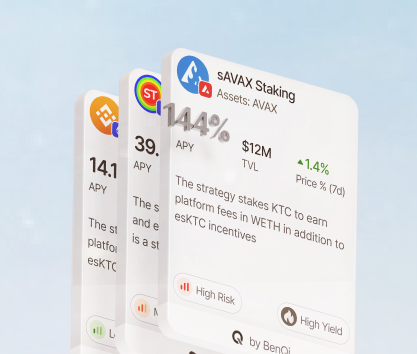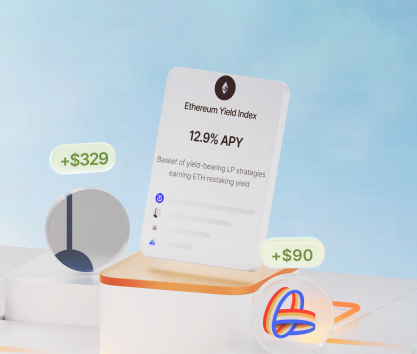Yield farming is a relatively new concept in the world of finance. The DeFi industry as a whole is not that old with Bitcoin making its debut over sixteen years ago and many other similar projects getting traction only several years later. It took the international community of investors several years to take notice of the new way of making money by supporting decentralized finance (DeFi) protocols and receiving hefty rewards for it.
Contemporary crypto investors have access to a wide range of unique financial instruments and investment products that are simply non-existent in the tradfi area. The ability to work with novel tools is quite important for adventurous capital holders seeking new methods of making their money work. Many newcomers think that yield farming mechanics are overly complicated and have a steep learning curve. In reality, nothing can be further from the truth.
We will cover the basics of this novel investment method and talk about some of the most prominent tools employed by professionals and novices. If you want to get started in the DeFi landscape and allocate funds efficiently, this guide will be quite useful. Let’s dive into the world of high APYs and exorbitant returns that coexist with incredibly high risks!
Crypto yield farming explained
The idea behind this group of strategies is to use crypto holdings to generate passive income through a variety of different capital allocation methods. Many investors combine different types of investing in one portfolio to achieve balance. For example, layering staking positions like in the case of LIDO/CONVEX can be extremely profitable, but you will increase the exposure of the portfolio. Adding safer positions to the mix can be beneficial in the long run.
Since an investor can employ a variety of tactics and invest in several platforms at once, it is important to keep track of risks and regularly adjust the composition of a portfolio to achieve consistent performance. You should never think of yield farming as just liquidity mining or lending tokens. It is a complex strategy that must be designed with many investment avenues in mind.
Crypto farming basics
The novelty of DeFi instruments requires newcomers to learn new terminology and concepts. Before we start discussing tips and tricks for building a good investment system based on farming yields, it is important to understand the vocabulary used in the sector. Getting acquainted with some of the most prominent platforms and techniques is also helpful. Let’s talk about passive crypto income, liquidity provision, lending, borrowing, and many other things!
What is farming in crypto?
This term covers several ways of passively making profits on crypto holdings staked on various decentralized finance protocols. With over 11,000 different pools to choose from and over a hundred projects focused on providing rewards to users in exchange for capital, the selection of financial instruments appears to be endless.
In general, yield farming refers to a group of investment methods where crypto owners provide funds to fuel Dapps and their operations in exchange for interest payments, a cut of fees, or other incentives. We have several distinct methods of yield farming and a couple of less-known strategies.
Types of crypto farming
The reason why many newcomers feel intimidated by the industry is the complexity of investment “games” with experienced crypto users staking and staking their holdings chaining together several platforms completely disregarding risks. On the other hand, many conservative capital holders are sitting with their coins generating returns in direct mainnet staking. The variety of approaches that contemporary investors can experiment with is simply impressive.
People without any prior experience with this sector should try engaging in simpler, more straightforward strategies. Understanding the core principles of different financial instruments is quite important if you plan to seriously start yield farming.
Decentralized exchanges provide a valuable service by facilitating economic activities in the global blockchain ecosystem through the simplification of asset swapping, automatic market making, cross-chain trading, and more. To keep the lights on and continue providing these essential services, DEXs need liquidity in the form of funds collected from supporters who are motivated to keep their funds locked in protocols.
Motivation is typically a cut of the fees collected by DEX platforms. Some DEXs have fixed rates and pay their liquidity providers a certain interest compounded daily, weekly, monthly, or quarterly. In recent times, the fierce competition between decentralized exchanges led to the overall increase of interest rates (APR) and a notable shortening of compounding periods.
Potential returns vary from one platform to another with some DEXes offering huge incentives in native tokens and others focusing on interest payments on the principal investment. For example, Aerodrom Finance has several pools with sizeable rewards in AERO. You can get up to 159% on OVN-USD+ or 71.53% on USD-AERO. 30-day averages have been even higher in August 2024.
On the other hand, DeDust deployed on The Open Network has a TON-USDT pool where users receive 4.11% base APY and up to 28.74% in TON rewards with 30-day averages regularly topping 50%. Among even more conservative options, SushiSwap has a liquidity pool for stablecoins (DAI-USDC) with a 3.23% base APY.
Staking in crypto
Proof-of-work consensus mechanisms were the norm at first. Both Bitcoin and Ethereum, the biggest networks, used it to facilitate blockchain activities. However, Ethereum decided to make a switch to the proof-of-stake mechanism that gives stakers the right to validate block creation and rewards them for it with newly generated tokens. It was quite pricey to become a validator as the minimum stake was and still is 32 ETH ($80,000 at the time of writing).
Wealthy investors could afford to run several nodes and frequently receive hefty rewards, but crypto enthusiasts with smaller capital had to join staking pools and receive portions of full rewards for their participation. Staking can be an excellent way to generate passive income with available tokens from PoS networks. Ethereum pays roughly 3% APY depending on the pool. ADA is slightly less profitable with APYs rarely going over the 2.8% threshold.
These numbers are only estimates. In some cases, you can expect up to 30% returns annually on your ETH stakes. It depends on revenues collected by DeFi platforms, market conditions, and many other factors. Note that it is possible to engage in liquid staking and restake holdings. For example, LIDO allows users to receive stETH which can be staked in a pool on Convex Finance for an additional 1.58% APY and 2.13% APY in CVX, LDO, and CVR rewards.
Lending crypto farming protocols
Many DeFi platforms are focused primarily on facilitating cash flows in the ecosystem by offering places where users can lend and borrow assets using smart contract technology. This particular investment method is hugely popular among conservative investors who are looking for safer capital allocation options. Since all debt is collateralized, the chance of losing money on lending is very low.
Compound is one of the oldest protocols in this sector. A good example of how you can make money by lending is by investing DAI, a hugely popular stablecoin, and receiving 2.15% base APY. With sufficient user activity, the real APY can reach higher numbers. For instance, the 30-day average in August 2024 was over 6.15%.
Some lending platforms offer opportunistic investment avenues like the GHO pool on the Aave V3 protocol. If you invest in it, you can earn up to 27.3%. Scallop Land is an emerging platform that pays up to 15.08% base APY on USDC holdings to attract users and facilitate cash inflows. Stablecoin lending is one of the safest methods of investing in the crypto industry.
Understanding crypto farming
The DeFi sector offers a multitude of viable strategies that can be employed to achieve massive returns on crypto holdings locked in yield-generating protocols. The main issue is finding the right balance between risks and rewards. It is also important to understand which tokens have the biggest potential for future growth and adoption.
Here are some examples illustrating the point above:
- ORCA on Solana offers SOL-DOGS pools that have meme coins. One of the pools, reportedly, has a 5,148% 30-day average APY with over $27 million TVL. It is a massive number that is most certainly artificially inflated. MIGGLES-WETH (Uniswap) on Beefy Finance has an exorbitant 85,900%. The issue is that even if these APYs were real, meme tokens themselves would be close to worthless by the time investors try to convert them to other assets.
- Stablecoin yield farming can be a good approach for people who are interested in steady returns. DAI (DSR) pool on MakerDAO has a 30-day average of 6.99%. The rates for DAI regularly change depending on available reserves, market conditions, and user activity. Another good example is Ethena on Ethereum paying 4.66% base APY on sUSD tokens.
Liquid staking is a commonly used instrument in the DeFi ecosystem. Many technological solutions have appeared recently to allow users to stake assets and mint their staked versions that can be used on other DeFi protocols for additional gains. For example, you can stake ETH on LIDO and receive stETH or join the Rocket Pool platform and receive rETH. These tokens can be restaked. For example, you can use rsETH on Kelp DAO for even higher returns.
Optimizing crypto farming
These three examples were chosen for their simplicity. They show how investors use vastly different target assets and techniques to achieve specific outcomes. Searching for the right composition of investments is hugely important for the long-term success of your operations in the DeFi ecosystem. In many cases, concentrating positions in a portfolio is a bad idea if you do not have insider information about target assets.
Some studies show that diversification is not better for a typical investor compared to concentration. Everyone chooses their poison and bears the responsibility for the outcome. We strongly recommend our readers explore different platforms and get some first-hand experience by investing small amounts of crypto in several protocols. Since predicting APYs is close to impossible, the information obtained through practical means becomes invaluable.
In many cases, manually investing in pools and trying to reinvest rewards can be quite challenging even for dedicated investors. Missing unbounding windows when assets can be extracted from pools and reinvested is quite dangerous due to market volatility and the risk of illiquidity. Platforms that automate these processes while offering additional features like reward structure analysis and auto-compounding should be on the radar of any yield farmer.
You can also use aggregators and portfolio trackers to further improve decision-making. The variety of these tools available to investors makes it easier for newcomers to get started even without prior exposure to the crypto industry.
Here are some interesting instruments for crypto yield farming:
- Beefy Finance is deployed on the Binance Smart Chain. It is a popular yield aggregator that works with multiple pools and supports a multitude of blockchains including Ethereum, Polygon, Optimism, and many others. The system automatically searches for the best rewards and makes adjustments to your portfolio. The platform tracks 740 pools across 22 chains and multiple partnered projects.
- Yearn Finance deployed on Ethereum is one of the most innovative yield aggregators with products like GIMME that utilizes layer 2 infrastructures to reduce gas fees or yCRV pools that allow users to get a cut of revenues generated by the protocol and the DEX Curve.fi. This Dapp also has a functional DAO with governance tokens distributed as rewards for staking DAI, USDC, wETH, and other eligible tokens. The veYFI token is trading for over $5,000 with a massive $3 million daily volume.
- Rivo.xyz is one of the best DeFi platforms for farming offering one-click investments and a variety of DeFi yield-generation strategies. Newcomers will find the ability to invest in DeFi indices quite appealing since it is much easier than monitoring several projects and trying to select one. For example, instead of trying to find a good pool on one of Arbitrum’s projects, you can simply start investing in the corresponding index that, as of the time of writing, had an impressive 11.7% APY.
While it is possible to navigate the overly complicated world of DeFi investing without any of the aforementioned tools, it is still a good idea to find instruments that make your journey easier. For instance, Rivo.xyz has a multi-functional wallet that provides an experience similar to what you usually expect from web 2.0 systems with polished interfaces and expertly crafted user experience.
Crypto farming risks and rewards
Huge APYs and endless streams of tokens seem very lucrative. It is easy to get lost in the cacophony of hype messages and increasingly profitable pools offering massive rewards in native tokens. However, an investor should always remember about the risks associated with yield farming:
- Smart contracts can have vulnerabilities. Since all DeFi protocols rely on these tiny programs for proper functioning, any error in their code can lead to catastrophic events.
- The impermanent loss happens when prices fluctuate too much and the difference between the value of tokens when you deposited them and the present is negative. It is something that investors have to be constantly aware of.
- Protocol risks. Many platforms are untested. Investors have to blindly trust their founders and invest capital in projects that may ultimately collapse or underdeliver on their promises.
- Liquidity shortages can occur if protocols do not have sufficient funds to ensure that investors can easily exit their positions without losing the value of their investments.
- The inflationary nature of rewards. Issued tokens are often immediately sold off on the market creating a strong downward pressure. The continuous issuance of assets also causes inflation. Over time, investors simply cannot justify holding their assets hostage and receiving nearly worthless tokens in exchange.
You should also remember that the best farming strategies are designed using meticulous calculations of potential losses, gas fees, commissions, interest payments on debt (in the case of leveraged yield farming), and more. The complexity of this particular money-making approach is what makes it risky for newcomers. Learning more about it before investing is imperative!









